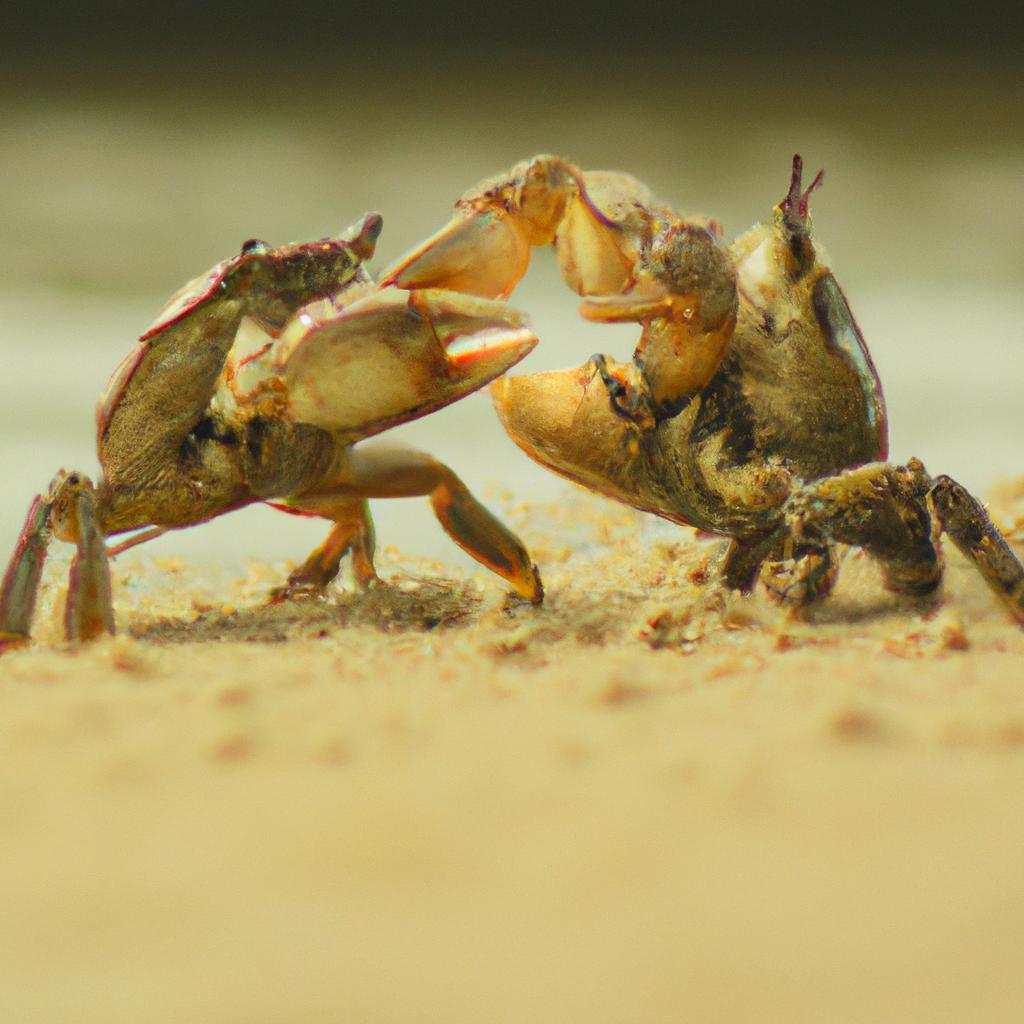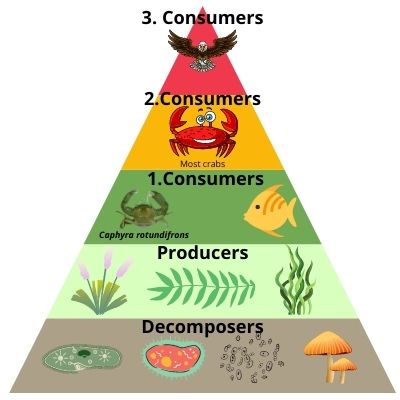But one question that has always intrigued me is:do crabs eat other crabs? I’ve spent hours researching this topic, and today, I’m here to share my findings with you.
The short answer is: Yes, crabs do eat other crabs.However, it’s not as simple as it sounds. There are a lot of factors that come into play when it comes to crabs eating their own kind.
I’ve always been fascinated by crabs, and I’ve spent countless hours observing them in their natural habitats. During one of my trips to the beach, I came across a green crab feasting on another crab.
I couldn’t believe my eyes – it was a gruesome yet fascinating sight. This experience sparked my curiosity about crab cannibalism and led me to research the topic in depth.
In this blog post, I’ll delve deeper into when, how, how often, and why crabs eat other crabs.
Contents
When Do Crabs Eat Other Crabs?
Crabs are opportunistic omnivores, which means they eat a variety of plant and animal matter, including other crabs.
Cannibalism is a natural behavior in many species of crabs, and it can play an important role in regulating crab populations. In some cases, cannibalism can help to control the size of crab populations by removing weaker or smaller individuals, which can reduce competition for resources such as food and shelter.
There are specific circumstances when crabs are more likely to eat other crabs, such as:
1. When they are hungry and there is a lack of other food sources
2. When they come across a dead or injured crab
3. During molting season, when a crab is vulnerable due to shedding its old exoskeleton
How Do Crabs Eat Other Crabs?
Crabs use their strong pincers to capture and break apart their prey. The crab first grabs the other crab with its pincers and holds it in place.

It then uses its other pincer to break the exoskeleton and pull out the soft flesh inside. The crab then consumes its meal little by little, savoring every bit of its crabby feast.
How Often Do Crabs Eat Other Crabs?
The frequency with which crabs eat other crabs depends on several factors, including the availability of other food sources, the population density of crabs in the area, and the presence of other predators.
In general, crabs are more likely to eat other crabs when their preferred food sources are scarce, and they are competing for resources.
Cannibalism Among Different Crab Species
While all crabs are capable of eating other crabs, some species are more likely to engage in cannibalism than others.
For example, the green crab is known to be highly aggressive and frequently consumes other crabs, including members of its own species.
On the other hand, the blue crab is less likely to eat other crabs, preferring to feast on smaller invertebrates and plants.
The Role of Cannibalism in Crab Populations
Cannibalism in crabs serves as a population control mechanism.
Some studies suggest that the level of cannibalism in crab populations may be influenced by factors such as food availability, habitat quality, and population density. For example, when food is scarce, cannibalism may increase as crabs turn to other members of their own species for sustenance.
Cannibalism can have a negative impact on crab populations, especially if it is occurring at high rates or if larger individuals are preferentially consuming smaller individuals. This can result in a reduction in the overall size and diversity of the crab population, as well as changes in the structure of the community as a whole.
Overall, the role of cannibalism in crab populations is complex and can vary depending on a range of environmental and biological factors. While it can help to regulate population size, excessive or uncontrolled cannibalism can have negative consequences for crab populations and the wider ecosystem.
By consuming their own kind, crabs help to balance the population density in their habitats.
This ensures that there are enough resources for all crabs to thrive while keeping their numbers in check.
The Impact of Crab Cannibalism on the Ecosystem
The impact of crab cannibalism on the ecosystem can be both positive and negative, depending on the specific circumstances.

Crab cannibalism can play an essential role in maintaining the health of the marine ecosystem.
By consuming other crabs, they help to regulate the crab population, ensuring that there are enough resources for all marine life.
Additionally, when crabs eat other crabs, they recycle nutrients and energy within the food web, contributing to the overall productivity of the ecosystem.
On the one hand, cannibalism can help to regulate the size and structure of crab populations, which can in turn affect the abundance and diversity of other species in the ecosystem.
For example, if crab populations are allowed to grow unchecked, they may consume a large amount of other organisms in their habitat, leading to a decrease in the abundance of those species. By controlling the size of crab populations through cannibalism, these negative impacts can be mitigated.
However, excessive cannibalism can also have negative effects on the ecosystem. If larger crabs are consuming smaller crabs at high rates, this can lead to a reduction in the overall diversity of the crab population, as well as changes in the composition of the community as a whole.
This, in turn, can impact other species in the ecosystem that rely on crabs as a food source, leading to cascading effects throughout the food web.
Additionally, cannibalism can also impact the physical structure of the ecosystem. For example, if crabs are consuming a large amount of dead or decaying organic matter, this can impact nutrient cycling and the availability of nutrients for other organisms in the ecosystem.
Overall, while cannibalism can play an important role in regulating crab populations, it is important to monitor and manage it carefully to ensure that it does not have negative impacts on the wider ecosystem.
Conclusion
So, to reiterate, yes, crabs do eat other crabs.Cannibalism among crabs is a natural part of their behavior and plays a significant role in regulating their population and maintaining the health of the marine ecosystem.
It may be a bit gruesome to witness, but it’s an essential aspect of their survival strategy.
The next time you see a crab scuttling across the beach, take a moment to appreciate the fascinating complexity of these remarkable creatures.
FAQs
How do crabs kill their prey?
Crabs use their sharp claws to catch and crush their prey, or to tear it apart into smaller pieces before consuming it.
Do crabs eat smaller crabs?
Yes, some species of crabs do eat smaller crabs as part of their diet.
How do crabs survive from predators?
Crabs have a hard exoskeleton that protects them from predators, and they can also use their sharp claws to defend themselves.
Some species of crabs also have the ability to camouflage themselves to blend in with their surroundings and avoid detection.
Do crabs eat their own kind?
Yes, some species of crabs are known to cannibalize their own kind, especially when food is scarce or during molting periods.
Do crabs eat live prey?
Yes, many species of crabs are carnivorous and will eat live prey such as fish, shrimp, and other small animals.
Is A crab A Predator or a Prey?
A crab can be both a predator and a prey, depending on its size and the ecosystem it inhabits. Small crabs may be preyed upon by larger predators, while larger crabs may hunt and feed on smaller animals.




